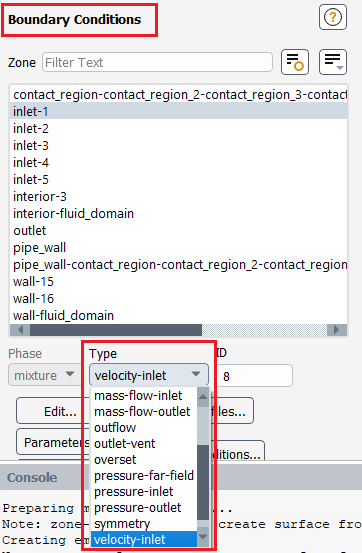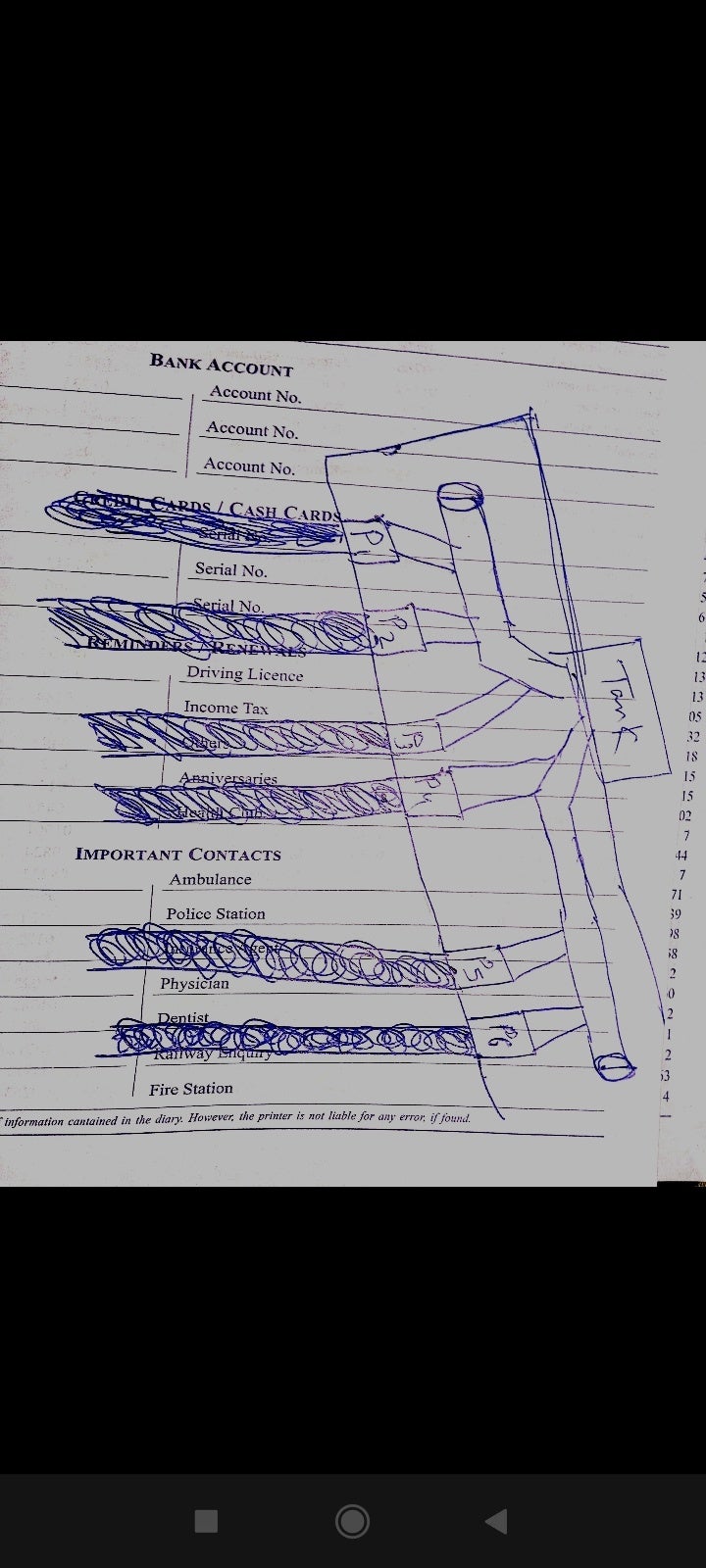TAGGED: ansys-fluent, cfd-post, fluent, fluid-dynamics, fluid-flow
-
-
November 21, 2021 at 3:06 pm
tumulpurwar
SubscriberWhat boundary condition and approach I should take?
I have 4 pipes coming from sea (source tank) and these 4 pipes are taking water from sea with help of water pump(p1, p2, p3, p4) and put it to tank, which is in vertical height of say 6 meter from sea. I want know
Effective combined pump flow rate for this combination of piping system & parallel pump
Also flow rate at tank individually by pipes also
November 22, 2021 at 9:01 amRob
Forum ModeratorWhat information have you got?
November 22, 2021 at 4:19 pmtumulpurwar
SubscriberHello Rob
Thanks for commenting, I don't have yet now input for this project.
But I would like to explore and know, how many ways are there to approach it.
Like one time may be I know inlet velocity or mass flow rate
On other situation, I don't know inlet velocity or mass flow rate.
Just trying to explore different scenerio in internal pipe flow cases.
November 26, 2021 at 11:30 amRob
Forum ModeratorYou will know something, that may be the flow rate OUT of the system, no reason not to use a suction (negative velocity) boundary. If the flow is constant density use velocity bc, it's more stable and only takes a minute or so to work out.
December 5, 2021 at 7:48 amDevin_Rana
SubscriberThere are many types of boundary conditions used in ANSYS like velocity inlet and outflow, pressure inlet and pressure outlet, mass flow rate, inlet vent, intake fan, outlet vent, and exhaust fan.
The most used boundary conditions are velocity inlet and outflow, pressure inlet and pressure outlet, mass flow rate. Here we show some basics of these boundary conditions.

From your question....
Mass flow inlet-outlet boundary conditions
Mass flow inlet boundary conditions are used incompressible flows when the inlet mass flow rate is known. It is not necessary to use mass flow inlet boundary conditions for incompressible flows because density is constant for incompressible flows and velocity inlet boundary conditions will fix the mass flow.
For analysis of mass flow rate at the outlet,Mass flow outlet boundary conditions is used.
You can refer to this article regarding different types of boundary conditions and where they can apply https://www.cadsys25.com/2020/06/cell-zone-and-boundary-conditions.html
December 7, 2021 at 11:48 amRob
Forum Moderatorthanks for the post. As a slight correction, outflow isn't widely used any more. It's an old boundary setting that is superseded by pressure outlet: I think I last used it in FLUENT v4 in the early 00s.
December 8, 2021 at 5:32 pmtumulpurwar
SubscriberThanks both for giving answers, I will come back to this same post with queries as I start that project soon. (In next 2 weeks)
Viewing 6 reply threads- The topic ‘Boundary condition ansys fluent’ is closed to new replies.
Ansys Innovation SpaceTrending discussions- air flow in and out of computer case
- Varying Bond model parameters to mimic soil particle cohesion/stiction
- Eroded Mass due to Erosion of Soil Particles by Fluids
- Centrifugal Fan Analysis for Determination of Characteristic Curve
- Guidance needed for Conjugate Heat Transfer Analysis for a 3s3p Li-ion Battery
- I am doing a corona simulation. But particles are not spreading.
- Issue to compile a UDF in ANSYS Fluent
- JACOBI Convergence Issue in ANSYS AQWA
- affinity not set
- Resuming SAG Mill Simulation with New Particle Batch in Rocky
Top Contributors-
3892
-
1414
-
1241
-
1118
-
1015
Top Rated Tags© 2025 Copyright ANSYS, Inc. All rights reserved.
Ansys does not support the usage of unauthorized Ansys software. Please visit www.ansys.com to obtain an official distribution.
-
The Ansys Learning Forum is a public forum. You are prohibited from providing (i) information that is confidential to You, your employer, or any third party, (ii) Personal Data or individually identifiable health information, (iii) any information that is U.S. Government Classified, Controlled Unclassified Information, International Traffic in Arms Regulators (ITAR) or Export Administration Regulators (EAR) controlled or otherwise have been determined by the United States Government or by a foreign government to require protection against unauthorized disclosure for reasons of national security, or (iv) topics or information restricted by the People's Republic of China data protection and privacy laws.












